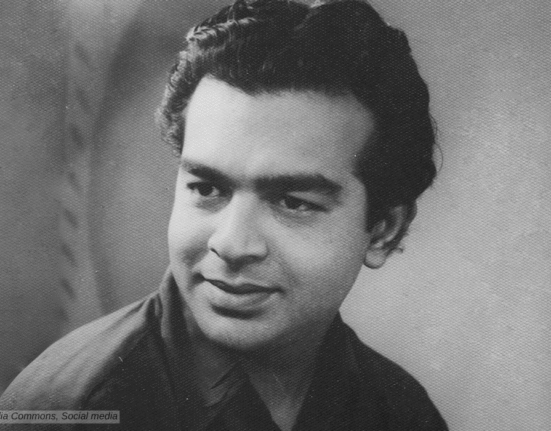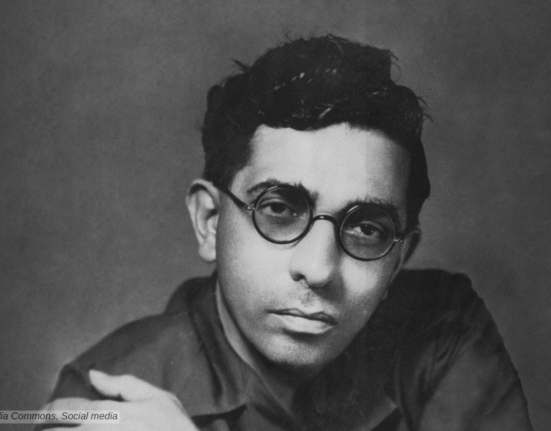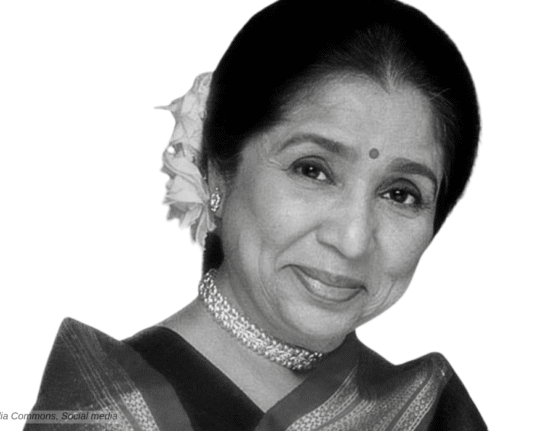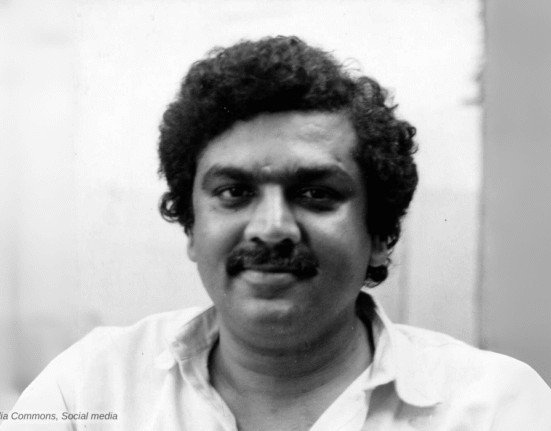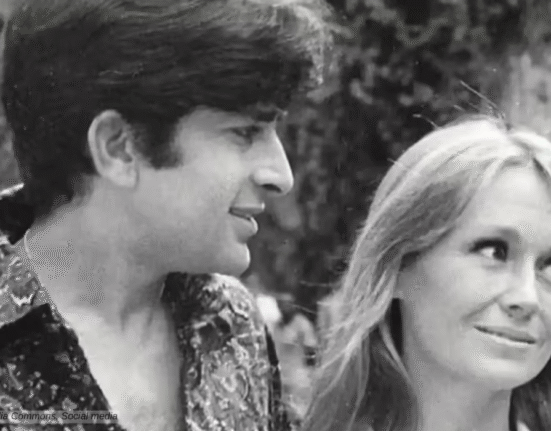One of the most celebrated Indian actors of all time, Om Puri, an actor par excellence, graced the Indian and international film industry with his immense versatility and unmached acting ability.
Acting is not about being someone different. It’s finding the similarity in what is apparently different, then finding myself there.
Om Puri
Om Prakash Puri was born in Ambala on October 18, 1950, into the family of Tek Chand Puri, who served in the Indian Army and also worked in railways and Tara Devi, a homemaker.
Puri came from a humble background, facing hardship early in life. When he was six, his father, a railway employee, was imprisoned for alleged theft, leaving the family homeless. To survive, his brother Ved Prakash Puri worked as a coolie, while Puri took on odd jobs. He worked at a local tea shop and even collected coal from railway tracks to help support his family, enduring many struggles during his early years.
Education and Training
Despite numerous financial difficulties, he never let that deter his passion for acting and continued his education while working part time. Om Puri completed his schooling from Government High School, Sanaur, Patiala, before going to Punjab Khalsa College Patiala, where he completed his BA in 1968. Puri was a born actor and was always interested in performing in school and college. During college, he developed a passion for theatre and began participating in drama competitions. Impressed by his performance, Punjabi playwright Harpal Tiwana invited him to join his theatre group, Punjab Kala Manch, offering him 150 rupees. This opportunity marked the beginning of his journey in theatre acting.
After a few years, he decided to join the National School of Drama in Delhi to study theatre acting professionally. It was in NSD that Naseeruddin Shah encouraged Puri to follow him to the Film and Television Institute of India in Poona.
Start of His Cinamatic Journey

Puri’s first film was Chor Chor Chhup Ja (1975), a children’s film followed by “Ghashiram Kotwal (1976),” jointly directed by K. Hariharan, Mani Kaul, Saeed Akhtar Mirza, and Kamal Swaroop. The film is based on the famous play by Vijay Tendulkar. He then acted in films like Smothered Voices (1977), Bhumika (1977), Godhuli (1977), Arvind Desai Ki Ajeeb Dastaan (1978), Bhookh (1978), Shaayad (1979), Sparsh (1979), Chann Pardesi (1979), Bhavni Bhavai (1979), and Albert Pinto Ko Gussa Kyoon Aata Hai (1979), mostly in supporting roles.
His breakthrough came with Govind Nihalani’s “Aakrosh (1980),” where Om Puri played the role of a tribal man falsely accused of murdering his wife. His portrayal of a man rendered voiceless by the systemic oppression was heart wrenchingly powerful. For the film, Puri won his first Filmfare Award for Best Supporting Actor.
The Superstar of Parallel Cinema
After Aakrosh, he continued his memorable run with the films Kalyug (1981), Shodh (1981), Gandhi (1981), Disco Dancer (1981), Vijeta (1981), Chokh (1981), Arohan (1981), Mandi (1983), Party (1984), Duniya (1984), Shrant (1984), Paar (1984), Tarang (1984), Giddh (1984), Holi (1985), Nasoor (1985), Aghaat (1985), Genesis (1986), New Delhi Times (1986), Mirch Masala (1987), Susman (1987), Marte Dam Tak (1987), Darshana (1989), Disha (1990) and many more.
Sadgati
In 1981, he acted in Satyjit Ray’s TV film “Sadgati,” based on a short story of Munshi Premchand. The film tells the story of a lower-class man who came to a priest’s house to request a small puja and how the upper-caste man treated him. In the heartbreaking climax, the hungry and thirsty man died, cutting wood for the priest in his courtyard. In the film, Puri and Smita Patil both gave the performances of their lives.
Arohan and Ardh Satya
In Shyam Benegal‘s “Arohan (1982), Puri’s portrayal of a poor farmer struggling against the feudal system won him the National Film Award for Best Actor. In another collaboration with Govind Nihalani, “Ardh Satya (1983)” saw Om Puri as an honest cop grappling with the corruption and violence of the police force. This role earned him his second National Film Award.
Jaane Bhi Do Yaaro and Tamas
One more significant film of his early career was Kundan Shah’s black staire “Jaane Bhi Do Yaaro (1983).” Puri portrayed corrupt and drunkard contractor Ahuja to perfection. Om Puri delivered yet again a compelling performance in Govind Nihalani’s television film “Tamas.” It was based on the novel by Bhisham Sahni, set against the backdrop of the 1947 India-Pakistan partition. Puri portrayed Nathu, a character whose actions and experiences reflect the tumultuous period of history. His intense portrayal was the key reason for the success of the series. His exploration of the dark themes of fear and violence during the partition, was exemplary.

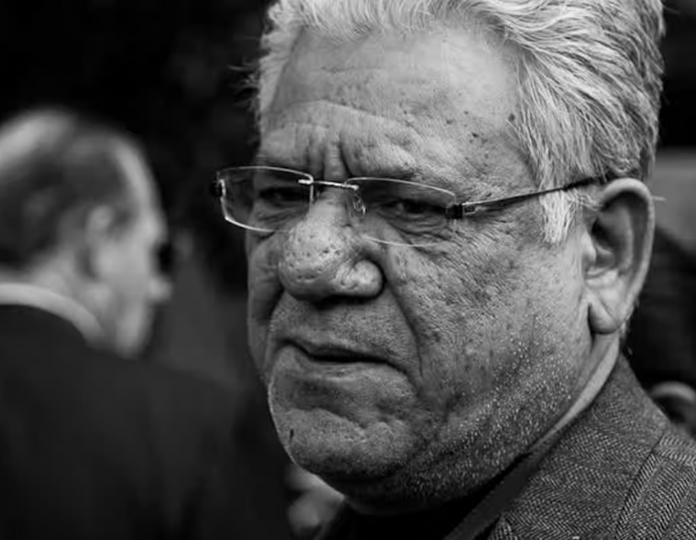
Mainstream success
In the 1990s, Puri started doing more mainstream films, which resulted in some of Hindi cinema’s most powerful roles in films like Ghayal (1990), Narsimha (1991), Raat (1992), Maya Memsaab (1993), PremGranth (1996), Maachis (1996), Ghatak: Lethal (1996), Gupt: The Hidden Truth (1997), Chachi 420 (1997), Mrityudand (1997), Pyaar To Hona Hi Tha (1998), China Gate (1998), Khoobsurat (1999), Pukar (2000), Hey Ram (2000), Hera Pheri (2000), and many more.
In his later years, continued to display his versatility in films like Bollywood Calling (2001), Awara Paagal Deewana(2002), Chor Machaaye Shor (2002), Maqbool (2003), Dhoop (2003), Yuva (2004), Aan: Men at Work (2004), Dev (2004), Lakshya (2004), Kyon Ki (2005), Deewane Huye Paagal (2005), Chup Chup Ke (2006), Rang De Basanti (2006), Malamaal Weekly (2006), Don: The Chase Begins Again (2006), Dhol (2007), Buddha Mar Gaya (2007), Singh Is Kinng (2008), Billu (2009), Delhi-6 (2009), Road to Sangam (2010), Don 2: The King is Back (2011), OMG: Oh My God! (2012), Agneepath (2012), Bajrangi Bhaijaan (2015), Aadupuliyattam (Malyalam, 2016), Mirzya (2016), A Death in the Gunj (2016), Gandhigiri (2016) and many more.
Other Work
Despite his mainstream success, he continued to do exceptional work in parallel cinema. In Sudhir Mishra’s Dharavi (1992), he played a common man who dreams about a better life. He also acted in Merchant Ivory’s “In Custody/Muhafiz (1993),” directed by Ismail Merchant. The film was based upon Anita Desai’s 1984 Booker Prize-nominated novel In Custody. He also acted in Govind Nihalani’s “Drohkaal (1994),” K. Bikram Singh’s “Tarpan (1995),” Basu Bhattacharya’s erotic drama “Aastha (1997),” and many more.
Om Puri’s remarkable talent flourished within Indian Parallel Cinema, particularly during its second phase alongside the NFDC. His theatre background honed his acting skills, allowing him to bring depth and sophistication to even the most intense roles. Known for his unique voice, Puri’s dialogue delivery combined reason with passion, adding an elegant touch to his performances. His ability to masterfully use language made him stand out as an actor.
Om Puri’s International Debut
Om Puri made his international debut with Richard Attenborough’s “Ghandhi (1982).” In 1991, he acted in Deepa Mehta’s “Sam & Me,” which was followed by Roland Joffé’s “City of Joy (1992)” with Patrick Swayze; Wolf (1994) with Jack Nicholson; and “The Ghost and the Darkness (1996)” with Val Kilmer.
Puri’s international work also includes his performance in the British film ‘My Son the Fanatic’ (1997). He played a taxi driver whose life is turned upside down by his son’s radicalization. This film showcased Puri’s ability to convey deep emotional narratives, earning him critical acclaim.
In “East is East (1999),” Puri’s played a Pakistani immigrant in England struggling with his identity and family conflicts. The role brought him international fame and earned him a BAFTA nomination for Best Actor in a Leading Role. The role was particularly notable for its blend of humour and pathos, as it explored the complexities of a multicultural family in the UK. The film’s success led to a sequel, ‘West is West’, where he reprised his role.
International Acclaim
Another significant contribution was in the Canadian film “Such a Long Journey (1998),” based on the novel by Rohinton Mistry. Puri’s portrayal of the protagonist, Gustad Noble, was highly praised for its depth and authenticity. The film was acclaimed for its storytelling and performances, and Puri’s role stood out as a highlight.
Some of his other English films include The Parole Officer (2001), Happy Now? (2001), The Zookeeper (2001), The Mystic Masseur (2001), Code 46 (2003), The Reluctant Fundamentalist (2012), Trafficker (2015), and Viceroy’s House (2017), among others.
In 2007, he appeared as General Zia-ul-Haq in “Charlie Wilson’s War,” which stars Tom Hanks and Julia Roberts. Another notable international project was “The Hundred-Foot Journey (2014),” produced by Steven Spielberg and Oprah Winfrey. In this film, Puri played an Indian chef who opens a restaurant in a remote French village. But to his surprise, comes into competition with a Michelin-starred French restaurateur, played by Helen Mirren.
His talent transcended borders, making him a prominent figure in international cinema. Widely recognised as one of the finest actors globally, he garnered two National Film Awards for Best Actor, two Filmfare Awards, and the prestigious Padma Shri in 1990. In 2004, he received an honorary Officer of the Order of the British Empire (OBE) for his contributions to the world of cinema.
Om Puri On TV
Puri also worked on television in iconic series like “Katha Sagar,” “The Jewel in the Crown,” “Khandaan,” “Bharat Ek Khoj,” “Kakaji Kahin,” “Mr. Yogi,” “Kirdaar,” Woh Chokri,” “Sea Hawks,” “White Teeth,” “Second Generation,” and “The Canterbury Tales,” among others.
Om Puri’s personal life was as eventful as his career. He married Nandita Puri in 1993, and they had a son together. His life off-screen was sometimes under media scrutiny, which he handled with grace and dignity. He was also married to Seema Kapoor in the early 1990s but marriage ended in divorce after some time.
Om Puri passed away on January 6, 2017, leaving behind a legacy that will inspire generations to come. His death was a significant loss to the world of cinema, but his work continues to live on through the many films and performances he left behind.
Om Puri belonged to a cohort of actors in Parallel Cinema, rising in the late ’70s alongside Shabana Azmi, Naseeruddin Shah, and Smita Patil. Throughout his career, he voiced dissent against the establishment. Even in his last times, criticised by mainstream Indian media for his traditional liberalism, Om Puri remained steadfast in his political convictions.
Om Puri on IMDB




